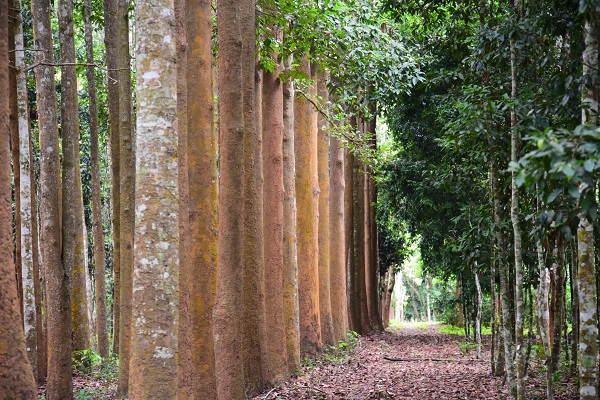China has become a leading exporter of wood products and importer of raw materials. Illegal logging poses a major threat to biodiversity and ecosystem services and drives deforestation. Accurate identification of species from timber is an essential step to help control illegal logging and forest loss.
DNA barcoding is regarded as a promising molecular tool for species identification using short-length, standardized DNA fragments. However, there is still no reliable DNA reference database for the economic and ecological important timber species.
In a study published in Molecular Ecology Resources, researchers from Xishuangbanna Tropical Botanical Garden (XTBG) and their collaborators constructed a comprehensive barcode library using four commonly used barcodes (rbcL, matK, trnH–psbA, and ITS2), representing 1,550 commercially traded timber species (656 genera across 124 families) from China and internationally.
“The database includes many novel sequences that will enrich existing timber barcode databases for tropical and subtropical evergreen timber trees in China,” said Prof.LI Jie, principal investigator of the study.
The researchers assessed the efficiency of four DNA barcode loci to help resolve the identity of threatened timber species from the Red List of Chinese Higher Plants. They found that the ITS2 fragment was the most efficient locus for Chinese timber species identification among the four barcodes tested, both at the species and genus level, despite its low recovery rate.
Overall, they found ITS2 is the best single marker for Chinese timber species, but the barcode combination matK+trnH–psbA+ITS2 exhibited more discrimination power to distinguish between closely related species in the dataset covering diverse internationally traded timber species.
Although DNA barcoding was not able to identify all individuals to species level identification in the study, in many cases it can provide supporting evidence incorporate with routine identification methods. DNA barcoding can also allow for rapid and accurate verification of illegally harvested organisms.
“The development of timber species barcode reference libraries provides a valuable source for several applications, including forestry management and policing, ecological investigations, and biodiversity conservation,” said LI Jie.
Contact
LI Jie Ph.D Principal Investigator
Center for Integrative Conservation, Xishuangbanna Tropical Botanical Garden, Chinese Academy of Sciences, Menglun, Mengla, Yunnan 666303, China
E-mail: jieli@xtbg.ac.cn

Timber forest in Xishuangbanna Tropical Botanical Garden. (Image by XIAO Yunxue)

